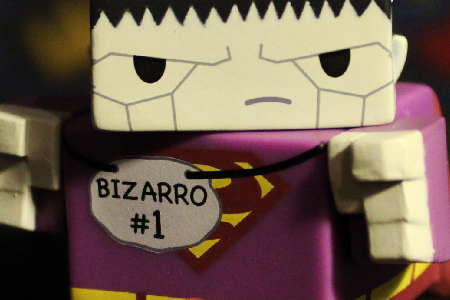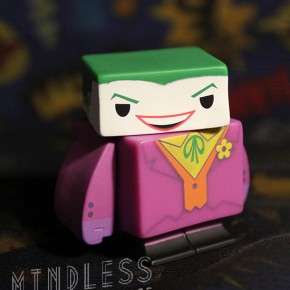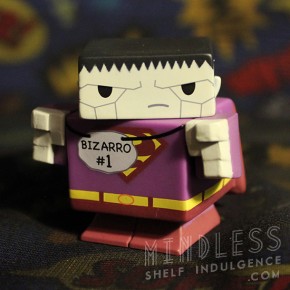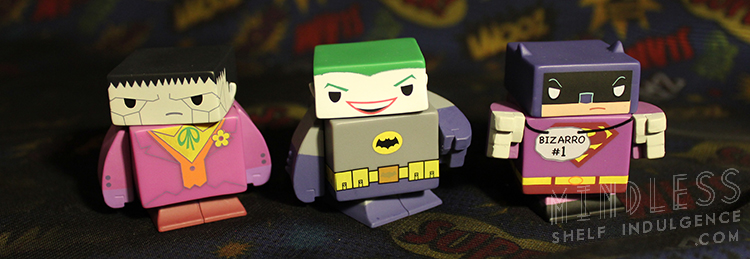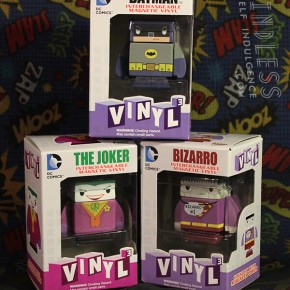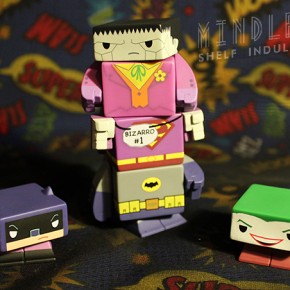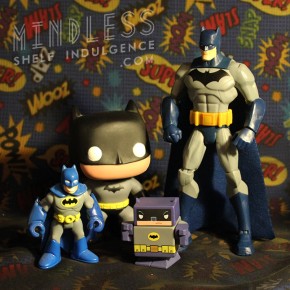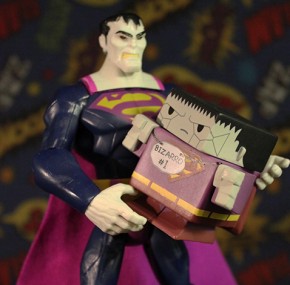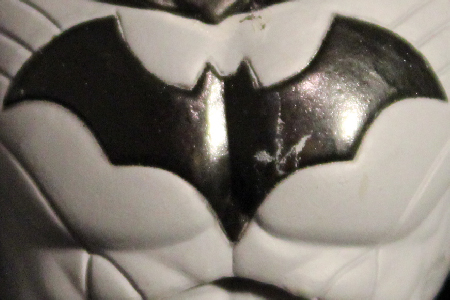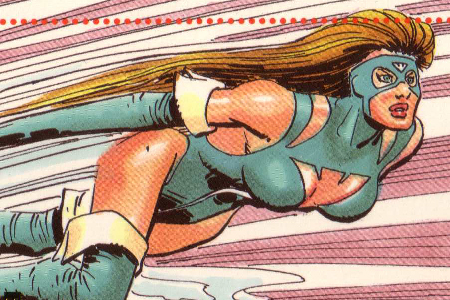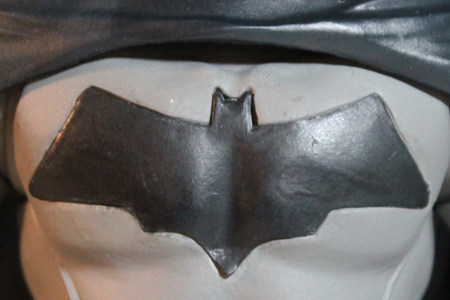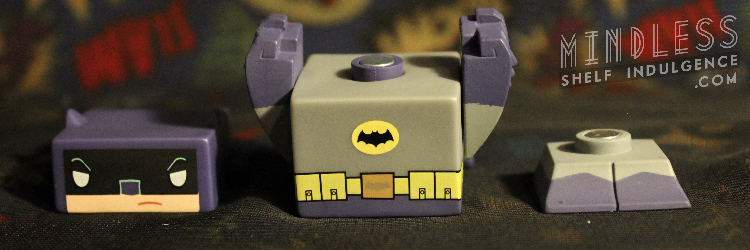
Once in a while, an object comes along that feels completely unexpected. Like Frankenstein’s Monster, it has no real right to roam this earth, the product of misguided aspiration mixed with weird desperation. It’s a conglomeration of ideas and parts that don’t seem to belong together, don’t really mesh comfortably, and might just end up throwing a little girl in a lake. Slap a ridiculously long, all-too-expository name on that object, and you have Funko’s DC Magnetic Interchangeable Vinyl Figures.
Funko has a history of throwing ideas at properties and seeing what sticks. They’ve had considerable success with their POP! line of bobbleheads and pseudo-bobbleheads, which bring many families of pop culture characters together in an oversimplified, big-headed figural format, incorporating properties from True Blood to Regular Show. It’s an aesthetic that manages to be cute without being offensively so. Alternately, Funko has produced a considerable flop with their Blox line of “figures”, which attempted to translate “urban art” styles into flattened figural objects. It was an idea that tried to feast on the long-dead corpse of something that was once hip, but it arrived a few years too late, and the idea was too challenging for Funko to really grasp, and the resulting figures ended up looking childish and unfinished. In between those two extremes are a variety of minifigures that, quite plainly, either suck or don’t. Funko vacillates between trendy art styles so wildly that they’re hard to pin down.
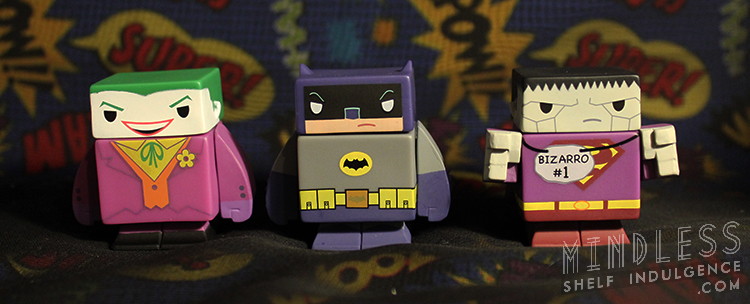
This is where DCMIVFs come in. I’m still not sure why they exist, or if they should. They incorporate so many things that I love that it’s hard to reconcile why I’m not enamored with this line of figures. They have it all:
- Geometric forms
- Fuckin’ Magnets
- Batman and Bizarro
- Small footprint in a life already cluttered with hero-themed junk
- Simplicty
- Low price
… so where, exactly, do these fall short?
Ultimately, the fact that they exist is ridiculous, and I cannot imagine the thought process that went into combining all of these things into one licensed object, but as an outside observer of the art behind toy trends, this seems to be how Funko operates. Sometimes, a process this scattershot can come up with something genius in its weirdness.
Each figure can be divided into three pieces: the head, the body and arms, and the feet. These pieces are held together with sufficiently strong magnets, but are easy to pull apart and reassemble. Much like Hasbro’s Marvel Super Hero Mashers, they don’t come apart at enough points to make the dissection gimmick worthwhile. You can pop a Joker head onto a Batman body, but those Batman arms are always going to stay the same. The change in appearance isn’t significant enough to really be worth a damn, and this point isn’t helped by the uniformity of available parts. “Sameness” and “interchangeability” do not work well in tandem. At best, you can get some weird human centipede action going by chaining bodies together.
Their shape, despite this simplicity and uniformity, is these figures’ main strength. You can never go wrong with a cube, and the sloping arms break up the figure’s forms in a really interesting, artistic way. No complaints here.
Where the figures really fall apart is how they’re illustrated. There’s no charm, interest or style in these characters’ faces. Their personality is reduced to a dull expression of mild discomfort, and their style in general suggests something more apt as a concept sketch than anything that should be considered final art. While I think that a certain amount of illustrative simplicity needs to exist on the surface of a figure of this nature, these fail to use that canvas and theme as they could. Bizarro’s craggy, white face is illustrated by a few thin, grey lines instead of, well, a proper illustration. Perhaps these are meant to evoke an older style of illustration, a la Amanda Visell, but they don’t really demonstrate enough style to be able to tell definitively. Five minutes in Adobe Illustrator isn’t enough.
There are ten figures in this first wave, and despite their flaws, they may survive on the merit of their low price point for a little while. They’re fun on a basic level, but ultimately, they feel like just another rushed product tossed on top of DC Comics’ merchandising empire. And a really great addition to my Shelf of Weird Batmen.
 C. David is a writer and artist living in the Hudson Valley, NY. He loves pinball, Wazmo Nariz, Rem Lezar, MODOK, pogs, Ultra Monsters, 80s horror, and is secretly very enthusiastic about everything else not listed here.
C. David is a writer and artist living in the Hudson Valley, NY. He loves pinball, Wazmo Nariz, Rem Lezar, MODOK, pogs, Ultra Monsters, 80s horror, and is secretly very enthusiastic about everything else not listed here.
